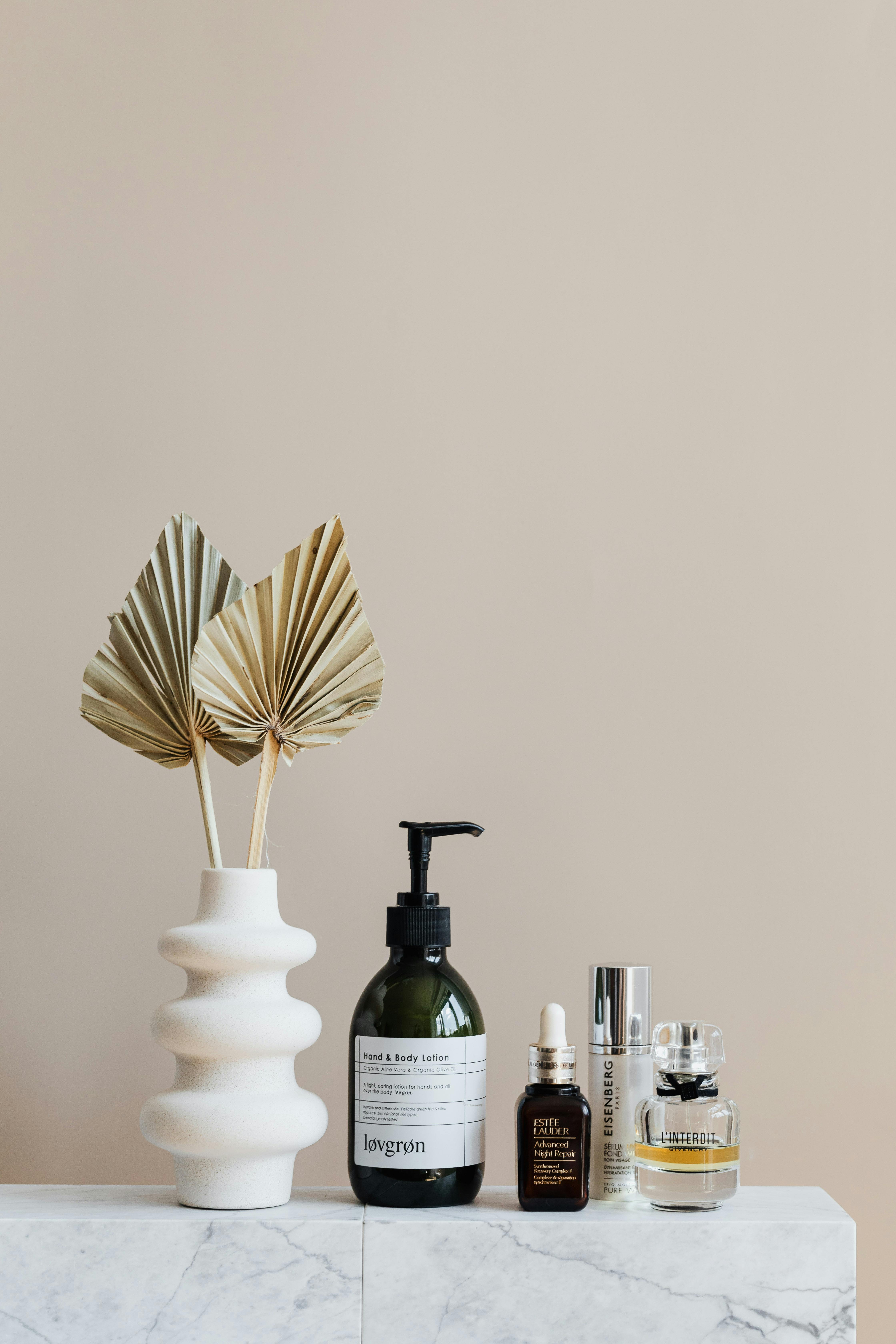Have you ever felt that your utility room could be more organized and functional? A well-planned shelving system can transform that cluttered mess into a neat, efficient space. Shelving isn’t just about organization; it’s about creating a sanctuary where everything has its place.

This image is property of images.pexels.com.
The Importance of Utility Room Shelving
You’ve probably noticed that utility rooms can quickly become dumping grounds for all sorts of odds and ends. From cleaning supplies to household tools, it doesn’t take long before the space is overwhelmed. Shelving brings order to chaos, providing designated spots for every item.
Creating Optimal Storage
You might think that storage is merely about having enough shelves, but it’s also about having the right kind of shelves in the right places. Think about what you store in your utility room. Cleaning supplies? Laundry items? Tools? Each category might need different shelving solutions.
Improving Functionality
You’ll find that having the right shelving not only helps with organization but also enhances the functionality of your utility room. With proper shelving, you can access items more quickly and perform tasks more efficiently.
Types of Shelving for Your Utility Room
Various types of shelving are available, and the right choice can make a world of difference. Here’s a closer look at some of the most popular options.
Wall-Mounted Shelving
Wall-mounted shelves save floor space, making your utility room feel more spacious. They are great for holding lighter items such as cleaning supplies and laundry detergents.
Freestanding Shelves
Freestanding shelves offer flexibility. You can move them around as needed, which is beneficial if you like to periodically reorganize your space.
Adjustable Shelves
Adjustable shelves are perfect for a versatile storage solution. You can modify the shelf height to accommodate items of varying sizes, ensuring optimal use of space.
Building Blocks of Adjustable Shelving
| Component | Description |
|---|---|
| Brackets | Support the shelves; can be moved along tracks |
| Tracks | Mounted on the wall, allowing brackets to be adjusted |
| Shelves | Placed on brackets, available in different materials |
Materials for Shelving
The material of your shelving is just as important as the type. It affects both the functionality and aesthetics of your utility room.
Metal Shelving
Metal shelves are durable and can carry heavy loads, making them ideal for storing tools and heavy equipment.
Wooden Shelving
Wooden shelves add a touch of warmth and can be very sturdy. These shelves are great for items that don’t require heavy-duty support.
Plastic Shelving
Plastic shelving is versatile and moisture-resistant, making it a good option for laundry rooms where dampness might be an issue.
Wire Shelving
Wire shelving is breathable and easy to clean. It’s a good choice for storing cleaning supplies and laundry baskets.
Pros and Cons of Different Materials
| Material | Pros | Cons |
|---|---|---|
| Metal | Durable, Strong | Can rust, Industrial look |
| Wood | Aesthetic, Sturdy | Can warp, Needs maintenance |
| Plastic | Moisture-resistant, Light | Less sturdy, Can look cheap |
| Wire | Breathable, Easy to clean | Limited weight capacity, Can sag |
Planning Your Shelving Layout
A well-thought-out layout is as essential as the shelving itself. Identifying your needs and planning the layout can create a more efficient and organized space.
Taking Measurements
First, measure your utility room. Knowing the dimensions will help you decide the size and number of shelves you need. Consider both wall and floor space to maximize storage options.
Assessing Your Storage Needs
Take a good look at what you need to store. Divide your items into categories and think about the best shelf types for each. This assessment helps you allocate space more efficiently.
Designing Zones
Create specific zones for different tasks or categories of items. This approach ensures that everything has its place and is easily accessible.
Example of a Zoning Plan
| Zone | Items Stored | Shelf Type |
|---|---|---|
| Laundry | Detergents, Softeners, Baskets | Wire or Plastic |
| Cleaning | Sprays, Cloths, Brushes | Wall-Mounted or Wood |
| Tools | Hammers, Drills, Screwdrivers | Metal or Wooden |
Considering Accessibility
You’ll want frequently used items within easy reach. Shelves that are too high or too low can be inconvenient. Plan the height of your shelves to ensure maximum accessibility.

This image is property of images.pexels.com.
Installation Tips
Installing shelves may seem daunting, but with the right tools and a bit of know-how, you can achieve a professional look all by yourself.
Gather Your Tools
Ensure you have all the necessary tools before you start. Typically, you’ll need a drill, level, measuring tape, and appropriate fasteners.
Mark and Measure
Measure twice, cut once – this age-old advice holds true. Accurate measurements and markings are crucial for a successful installation.
Use a Level
To avoid slanted shelves, always use a level. Even a slight slant can affect the functionality and aesthetics of your shelving.
Studs and Anchors
For wall-mounted shelves, finding wall studs or using appropriate wall anchors is essential. This practice will ensure that your shelves are sturdy and secure.
Maintenance and Upkeep
Proper maintenance of your shelving system ensures its longevity and continued functionality.
Regular Cleaning
Shelves can accumulate dust and grime over time. Regular cleaning will keep them looking good and ensure your items remain clean.
Inspection and Tightening
Periodically check your shelves for any signs of wear or loose screws. Tighten and adjust as needed to maintain their integrity.
Adapting and Adjusting
As your needs change, don’t hesitate to adjust your shelving system. The beauty of adjustable and modular shelving is that it can evolve with your storage needs.

This image is property of images.pexels.com.
Creative Shelving Ideas
Want to give your utility room a personalized touch? Incorporate creative shelving ideas for a more customized approach.
Repurposed Bookshelves
Old bookshelves can find a new life in your utility room. They can be painted or stained to match your décor and provide a stylish storage solution.
Over-the-Door Storage
Utilizing over-the-door storage systems can free up even more space. These are perfect for items like brooms, mops, and ironing boards.
Basket Shelves
Using baskets on shelves not only creates a neat appearance but also allows for easy sorting and organization.
Recommended Basket Types
| Basket Type | Best Use |
|---|---|
| Wire | Laundry items, Cleaning supplies |
| Woven | Lighter items, Decorative purposes |
| Plastic | Moisture-resistant items |
Safety Considerations
Safety should always be a priority when installing shelving in your utility room.
Weight Limits
Be mindful of the weight limits of your shelves. Overloading can lead to breakages and pose a safety hazard.
Secure Mounting
Ensure all shelves, especially wall-mounted ones, are securely mounted. The use of proper anchors and finding studs can greatly enhance safety.
No Sharp Edges
Smooth out any sharp edges that can cause injury. If your shelving material has sharp corners, consider using edge guards.
Budget-Friendly Options
Setting up shelving doesn’t need to break the bank. There are plenty of budget-friendly options available.
DIY Shelving
If you’re handy with tools, consider building your own shelves. This option allows for customization and can be more cost-effective.
Second-Hand Finds
Look for second-hand shelves at thrift stores or online marketplaces. A coat of paint might be all they need to fit perfectly in your utility room.
Modular Shelving
Modular shelving units can be both affordable and versatile. They allow you to add sections as your storage needs grow.
Environmental Impact
With growing environmental concerns, you may want to consider the impact your shelving choices have on the planet.
Sustainable Materials
Opt for shelving made from sustainable materials like bamboo or reclaimed wood. These choices are better for the environment and often have unique, attractive looks.
Recycling and Repurposing
Consider recycling old shelves or repurposing other furniture for your utility room. This practice can reduce waste and give furniture a second life.
Energy Consumption
Be mindful of the energy consumption associated with manufacturing and transporting shelving materials. Locally sourced options are often more eco-friendly.
Future-proofing Your Utility Room
A well-organized utility room is an evolving space. As your family grows or your needs change, your utility room should adapt.
Modular Systems
Investing in a modular shelving system can make future adjustments easier. You can add or remove sections as required, offering long-term flexibility.
Anticipating Changes
Consider potential changes in your lifestyle or household needs. Planning for these changes can save time and money in the long run.
Potential Future Needs
| Change | Shelving Impact |
|---|---|
| New family member | Additional storage for baby items |
| Home renovations | Temporary storage solutions |
| Change in hobbies/interests | New storage for tools or supplies |
Real-Life Examples
To help you visualize, here are some real-life examples of well-organized utility rooms. These examples can serve as inspiration for your own shelving project.
Case Study 1: The Laundry Room Makeover
A couple transformed their cramped laundry room by adding wall-mounted wire shelves. They designated zones for detergents, fabric softeners, and cleaning supplies. The result? A spacious and organized area where laundry became less of a chore.
Case Study 2: Tool Haven
A DIY enthusiast revamped his utility room to store an extensive collection of tools. He installed sturdy metal shelves and used clear plastic bins for smaller items. The organized space made it easier to find and access tools, making his projects more enjoyable.
Case Study 3: Multifunctional Marvel
A creative homeowner converted a small utility room into a multifunctional space by integrating wooden shelving with baskets. The room served as a laundry area, pantry, and storage for seasonal items. The dual-purpose shelves allowed for efficient use of a limited space.
Conclusion
By now, you should have a clear understanding of how utility room shelving can transform your space. From assessing your storage needs to choosing the right materials and planning your layout, every step is crucial. Proper shelving not only enhances organization but also improves the functionality and aesthetics of your utility room.
Don’t forget that maintenance and safety are essential to keep everything in top shape. Whether you’re working on a tight budget or seeking sustainable options, there’s a shelving solution for everyone. So go ahead and start planning—your ever-efficient utility room awaits!


